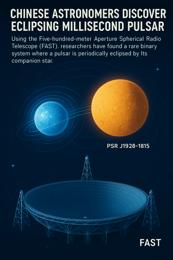Picture: for illustration purposes
NASA Directs Technology Towards South Africa's Biodiversity in New BioSCape Project
NASA, a name often associated with studying the vast mysteries of outer space, has turned its technology towards the Western and Eastern Cape of South Africa in an effort to unravel the intricacies of Earth's biodiversity. This initiative — known as BioSCape — is a scientific endeavor being conducted with several South African organizations. The goal is to link satellite and airborne data with field observations to better comprehend the biodiversity of the Greater Cape Floristic Region (GCFR), an area described as one of the most challenging places on Earth to study biodiversity.
In the fall of last year, two modified NASA aircraft, a Gulfstream III and Gulfstream V, commenced a six-week period of data collection across the GCFR, mapping out the territory's unique ecological patterns and species distribution. A joint team of approximately 150 scientists from the US and South Africa, who diligently worked for almost eight years to make this mission possible, enthusiastically observed the first takeoff.
The project aims to develop new technologies for monitoring and managing the contributions of nature to humankind, thereby reducing biodiversity loss and threats posed by climate change. Woody Turner, a programme scientist for Biological Diversity and Ecological Forecasting at NASA, explained that the interconnectedness between biodiversity and climate change shapes the functionality of our planet, which in turn directly influences human life.
Anabelle Cardoso, BioSCape science team manager, described the groundbreaking nature of the project, highlighting the high hopes for the imaging spectrometers to help monitor ecosystems on Earth as they currently do for other planets.
BioSCape is tapping into a unique combination of four remote sensors built on the aircraft, each gathering distinct sets of data that, when fused together, will allow scientists to create a comprehensive biodiversity map of the GCFR. The amalgamation of data collected from these sensors will provide an unparalleled perspective on the distribution of species, ecosystems and their characteristics.
Ultimately, the project embodies a pioneering approach to biodiversity science, providing invaluable scientific insights and propelling forward our understanding and preservation of one of Earth’s most unique biodiversity hotspots.










